- News
- Reviews
- Bikes
- Accessories
- Accessories - misc
- Computer mounts
- Bags
- Bar ends
- Bike bags & cases
- Bottle cages
- Bottles
- Cameras
- Car racks
- Child seats
- Computers
- Glasses
- GPS units
- Helmets
- Lights - front
- Lights - rear
- Lights - sets
- Locks
- Mirrors
- Mudguards
- Racks
- Pumps & CO2 inflators
- Puncture kits
- Reflectives
- Smart watches
- Stands and racks
- Trailers
- Clothing
- Components
- Bar tape & grips
- Bottom brackets
- Brake & gear cables
- Brake & STI levers
- Brake pads & spares
- Brakes
- Cassettes & freewheels
- Chains
- Chainsets & chainrings
- Derailleurs - front
- Derailleurs - rear
- Forks
- Gear levers & shifters
- Groupsets
- Handlebars & extensions
- Headsets
- Hubs
- Inner tubes
- Pedals
- Quick releases & skewers
- Saddles
- Seatposts
- Stems
- Wheels
- Tyres
- Health, fitness and nutrition
- Tools and workshop
- Miscellaneous
- Cross country mountain bikes
- Tubeless valves
- Buyers Guides
- Features
- Forum
- Recommends
- Podcast
feature
8 things you didn't know about the new Specialized Tarmac SL8
Whether it's a bike you would consider saving up for yourself or not, it's hard to deny that the Specialized Tarmac SL8 is the hottest road bike in the world right now. All the hype means we had plenty of questions about Di2 batteries, tyre sizes, wind tunnels and more (and we're sure you do too) so here are some of the lesser-known tech takeaways from the launch.
Unless you’ve been hiding under a rock you’ve probably heard that Specialized has a new road bike to show off and well, we've got our hands on it… again! For this article and video, we're focussing less on whether we think the bike is any good or not (for that you can head over to our first ride impressions feature, or wait for our full review due shortly) and more on the tech details and claims. That meant much pestering of the Specialized engineers and PR team - so here are eight things we learnt at the official launch of the SL8 in Scotland...
1. There's over 500 sections of carbon in the Fact 12R frame
Something that you won’t see in the press release is that in the top-of-the-range FACT 12R S-Works Tarmac SL8 frame, there are over 500 pieces of individual carbon fibre.
Specialized knew what shape of frame it wanted quite a while ago, then tried loads (and loads and loads) of different carbon fibre layups until it got the desired stiffness, compliance and weight savings.
The UCI is quite strict about the external shape of the frame, but there are very few rules on what the bike can be made out of and how it’s laid up, so this is an obvious area to gain an advantage over rivals.
> Which Tour de France superbike is the best? Pinarello vs Specialized vs Colnago vs Cervelo
Luckily for Specialized, the brand has access to a very powerful computer that does a lot of the simulating. Moving around more than 500 sections of carbon until after over 50 attempts, the engineers arrived at this final layup with the desired frame characteristics.
Just to add to the workload, each frame size then has to be designed to have the same stiffness and compliance. This is because a longer tube is obviously going to flex more than a shorter one.
2. Yes, it has been impact-tested
On the subject of frame material - the first thing that popped into my head when I heard about the minuscule frame weight was impact strength. The Tarmac SL8 is a race bike, and in races accidents and crashes do come with the territory.
The last thing you want is your four-and-a-half grand frame to be written off, but the Specialized engineers assure me that they’ve done both their homework and testing. This means that the SL8 is more resilient than the Aethos, and only "very marginally less" robust than the SL7 despite being 120g lighter.
3. The mech hangar is lighter than the SL7 version
Something that you wouldn't notice when looking at the new bike is that the rear mech hanger is lighter, even though it's the same shape as the SL7's hanger. While this doesn't save much weight at all and probably won’t make you any faster, it is nice to know that every detail has been considered. A few grams is a few grams, after all.
I also learnt that the paint on these S-Works models is done by hand! A red paint job adds about 50 grams to the frameset weight when compared to one in the satin colourway.
> The lightest road bike frames and components in the world
The thru-axles are also lighter than those on the SL7 ones. They’re straight out of the Aethos parts bin...
4. The seatpost hardware is titanium
This D-shaped seatpost is all new for the SL8, and it’s a fair bit thinner than the one you’ll find on the SL7. Not only is it more aero than the SL7 post, but it’s also 30g lighter. As you’d hope on a super-premium bike, the two bolts on this S-Works seat clamp are titanium just like the stem bolts at the front.
This front one has another hidden detail, with four holes drilled into the head. This means if you can’t access it through a hole in the saddle, you can put a tiny Allen key through to spin the bolt.
One of the consequences of having a thinner seatpost is that a Di2 battery will no longer fit inside it if you're running a Shimano groupset. Cannondale, for example, has overcome this by using a bit of string to help you fish it out of the bottom bracket area when the time comes.
I must admit I’m quite impressed with Specialized's solution, a removable plastic mount that holds the battery to the bottom of the seatpost to avoid rattling. This also makes it easy to access if you ever need to.
5. The Roval integrated cockpit has 4 degrees of flare
You’ve probably all seen by now that the new Roval Rapide integrated handlebar comes as standard on the S-Works SL8. It’s this that is responsible for more than half of the aero gains, and that’s probably why we’ve already seen plenty of people fitting them to their existing bikes, not just the SL8.
The bar follows recent trends by going flared, four degrees in fact. That means the bar is wider at the drops than it is at the hoods. In comparison, the Rapide non-integrated bar has two degrees of flare.
Four degrees is still a lot less than we see some riders opt for. As an example, Tadej Pogacar's new Enve integrated cockpit clearly has a significant amount more. The Specialized engineers, however, tell me that this additional flare is not in any way responsible for the claimed watt savings, so these could be further gains if you choose to go down a bar size for this reason.
6. Lower bottle cage mounts are back
Remember the 2019 Venge? Well, those with particularly good memories might remember that it has three bottle cage bolts so that you can mount the bottle cage in multiple positions. I asked the SL8 designers why they were back for the latest Tarmac, and the answer is... aero!
Supposedly the lower you mount your bottles towards the bottom bracket, the more aero it is - however, some riders, particularly those with shorter arms or less flexibility, might prefer their bottle a bit higher to make it easier to grab whilst riding, hence the two positions.
Obviously, I wanted to know how many watts I could potentially be chucking away by having my bottle higher. The Specialized engineers said the difference in their testing was less than one watt, so this should still be taken with a pinch of salt due to margins of error. Still, if you’re looking for every very, very marginal gain and don't mind reaching down a bit more to grab your bottle, there's no harm in going for the lower position.
7. 26mm tyres are still the fastest
Some people might have been surprised that the SL8’s clearance remains at 32mm. That's certainly large enough for most but less clearance than some other recent aero bikes. The Cervelo S5, for example, has 34mm of clearance. Specialized says the tyre clearance choice was informed by its pro riders under the Project Black testing procedure.
In the wind tunnel at least, it’s the 26mm rubber that is fastest on the Roval Rapide wheels according to Specialized. Although, 28mm tyres are only a few watts slower at World Tour race speeds. For most riders on UK roads, I’d argue that it would be best to go for 28mm tyres. Still, it is interesting that Specialized has built in that 6% extra rear compliance just so its pro riders can still go for the marginally quicker 26mm tyres, without feeling beaten up after hours of racing.
8. The Flo Viz paint job is kind of genuine…
One of the most circulated pictures of the new Tarmac is this one with it covered in green paint. No, it’s not the work of some rogue contemporary artist and instead was a genuine step in the project development.
The Specialized engineers told me that this flo viz paint is used in the wind tunnel as a visual aid to highlight the leading edges, and the bits of the bike and components hitting the wind first. This did raise a few questions for me. There are clearly no legs spinning the pedals in this picture, and it’s also clear that the wheels aren’t spinning - two things that are necessary in the real world and have a considerable impact on the aerodynamics of a frame.
> Are expensive carbon wheels worth it?
Miles Hubbard, Specialized's Product Manager, ensured me that both the wind tunnel testing and extensive CFD analysis used moving legs and wheels in the simulations to be as realistic as possible - but the green paint job was a genuine step in the development of the new bike, and one that the marketing team stuck some clear coat on and clearly went to town with!
Did any of these facts surprise you? Let us know any interesting snippets of information that you’ve picked up about the bike in the comments section below!
Jamie has been riding bikes since a tender age but really caught the bug for racing and reviewing whilst studying towards a master's in Mechanical engineering at Swansea University. Having graduated, he decided he really quite liked working with bikes and is now a full-time addition to the road.cc team. When not writing about tech news or working on the Youtube channel, you can still find him racing local crits trying to cling on to his cat 2 licence...and missing every break going...
Latest Comments
- Geordiepeddeler 57 min 21 sec ago
So is Border Farce going to fine themselves £1500 pound for every illegal they let in on the little boats? If they were, they'd soon do their job...
- froze 1 hour 46 min ago
I pray Wiggins has found peace and happiness; he was a great cyclist, no one can take that away from him. And a huge thanks to Lance Armstrong for...
- Laz 1 hour 54 min ago
geeze....but a carbon fork, huh ? they should provide a rim brake option for us oldtimers who have matured to having more disposable income than...
- Laz 2 hours 8 min ago
so, instead of having both hands on your brakes controling your steering and being ready to avoid a collision, you now are required to imperil...
- lonpfrb 7 hours 11 min ago
If this government were truly interested in change, and joined up government between...
- lonpfrb 7 hours 34 min ago
It's easy to remove the pipe from the fasteners which are C shaped so able to hold but not trap the pipe. Filtering through traffic is then...
- wtjs 7 hours 52 min ago
What was on offer only 2 weeks ago was either 'world' for £20 or tiny areas such as 'Blackpool area' for £5 each or something. You couldn't just...
- Simon E 8 hours 14 min ago
“fastest, lightest, and most durable road tyres yet” Yeah right. "Strong, light, cheap. Pick two."
- David9694 8 hours 37 min ago
Surely a penalty notice will have been delivered by now, which will state where the car is parked?
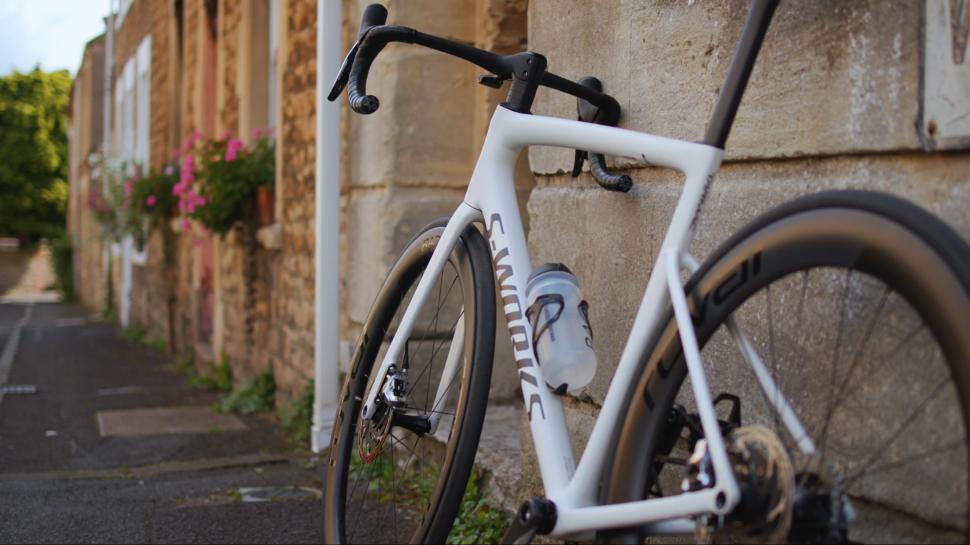
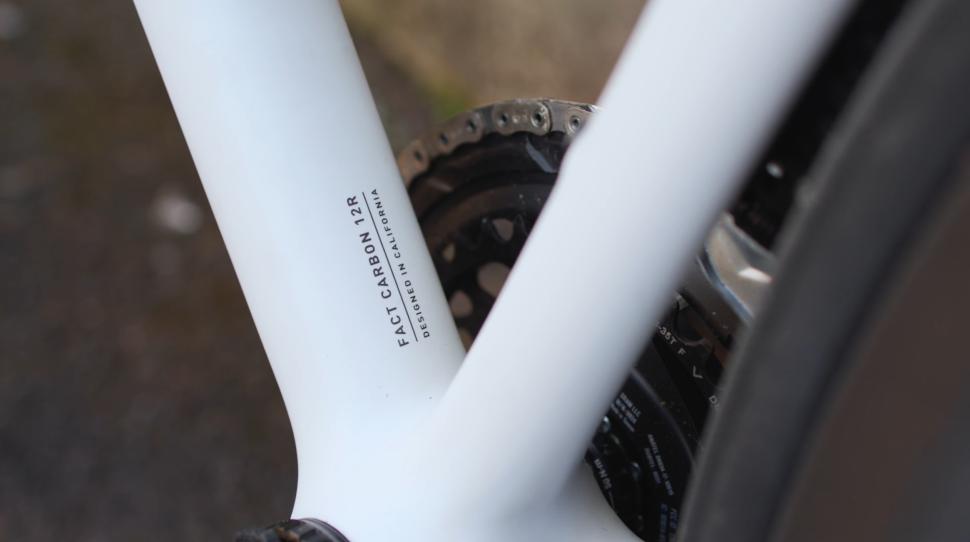

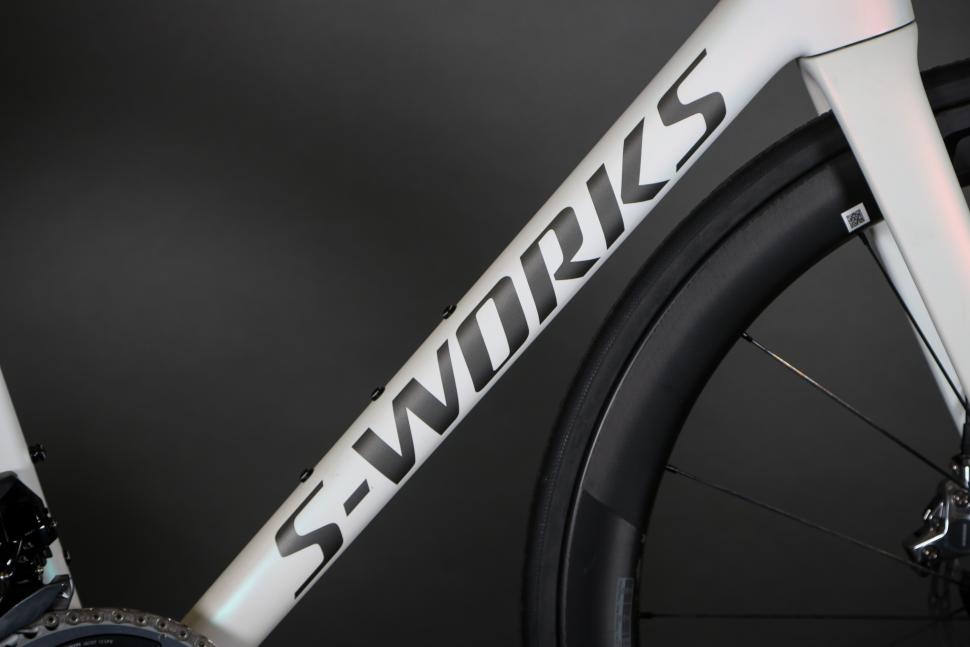
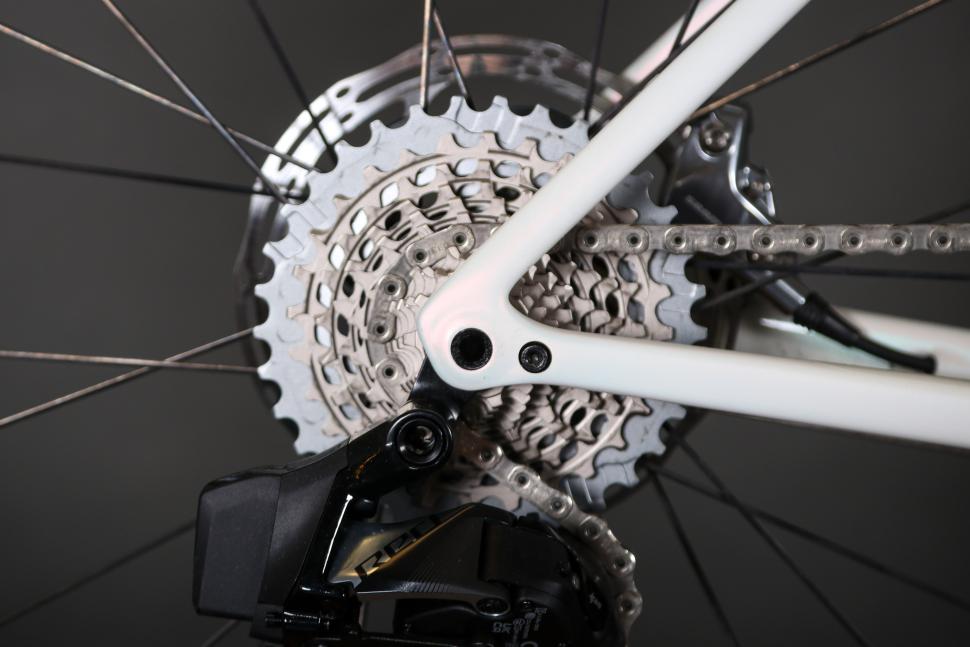
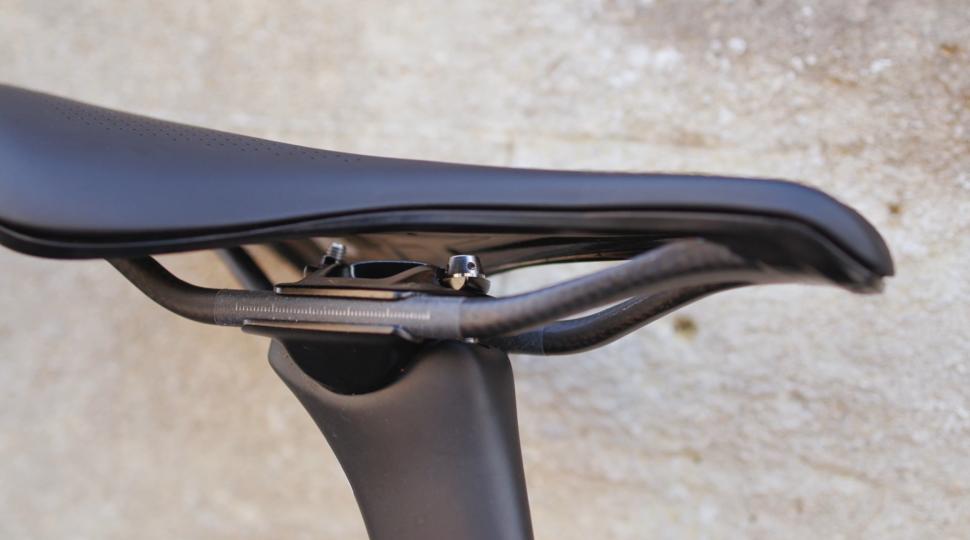
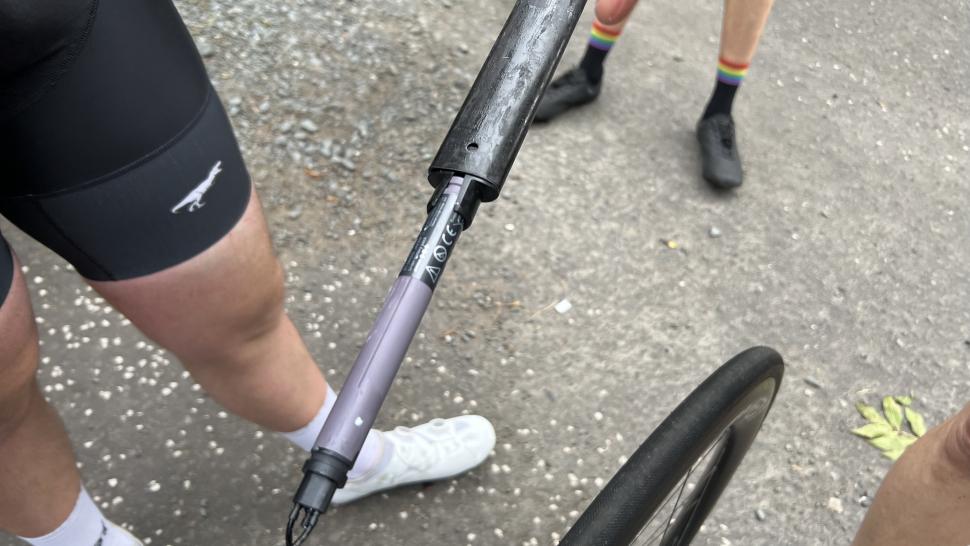
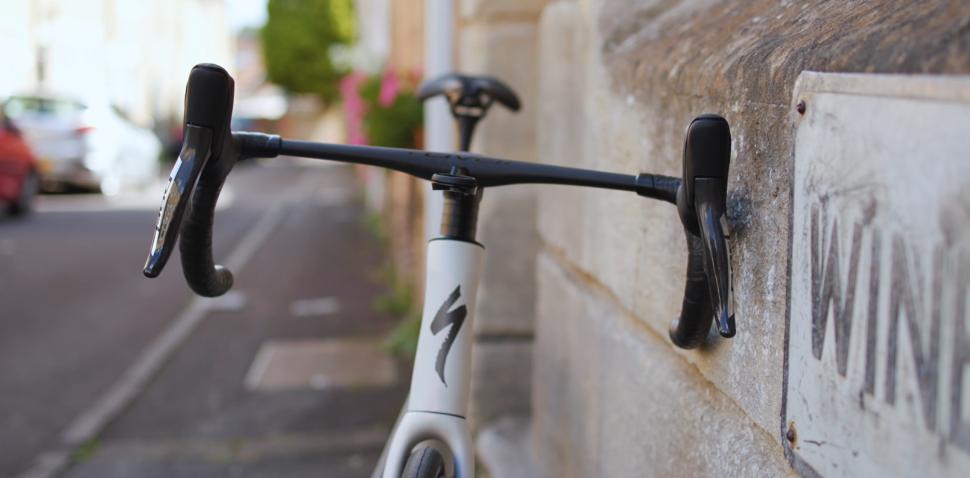
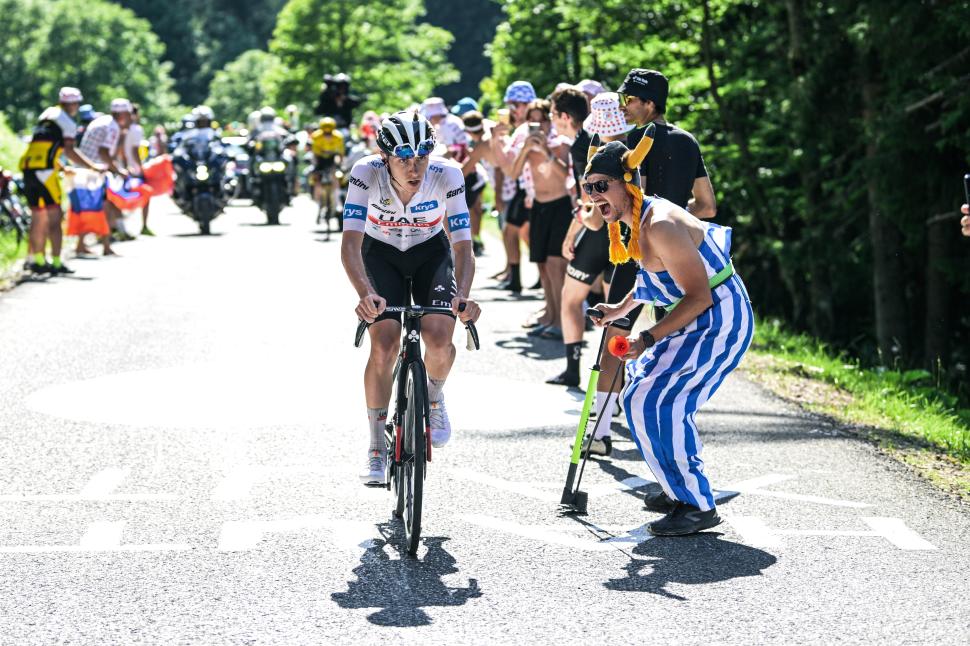

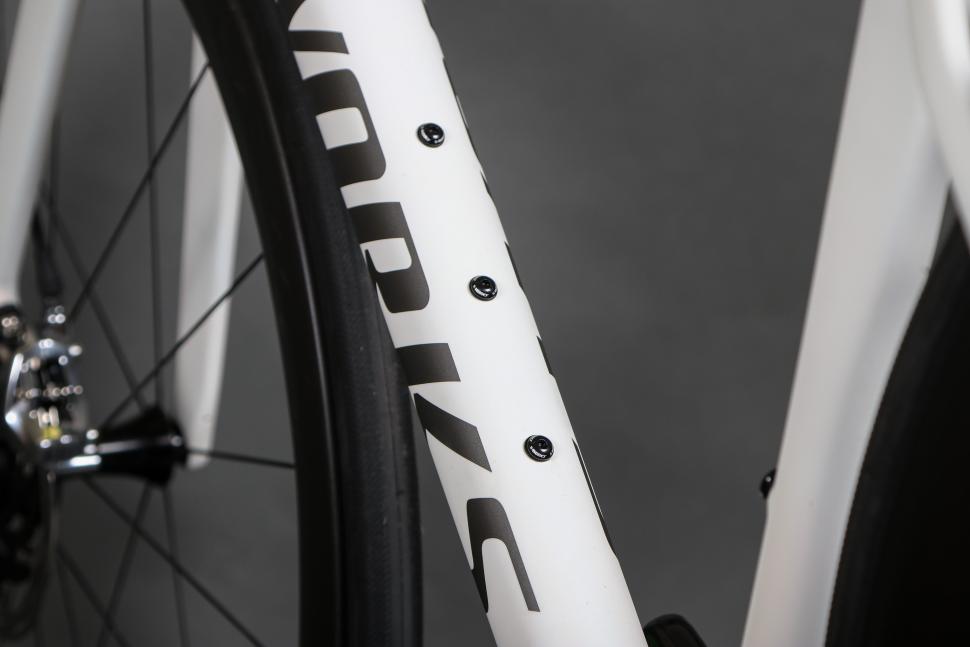
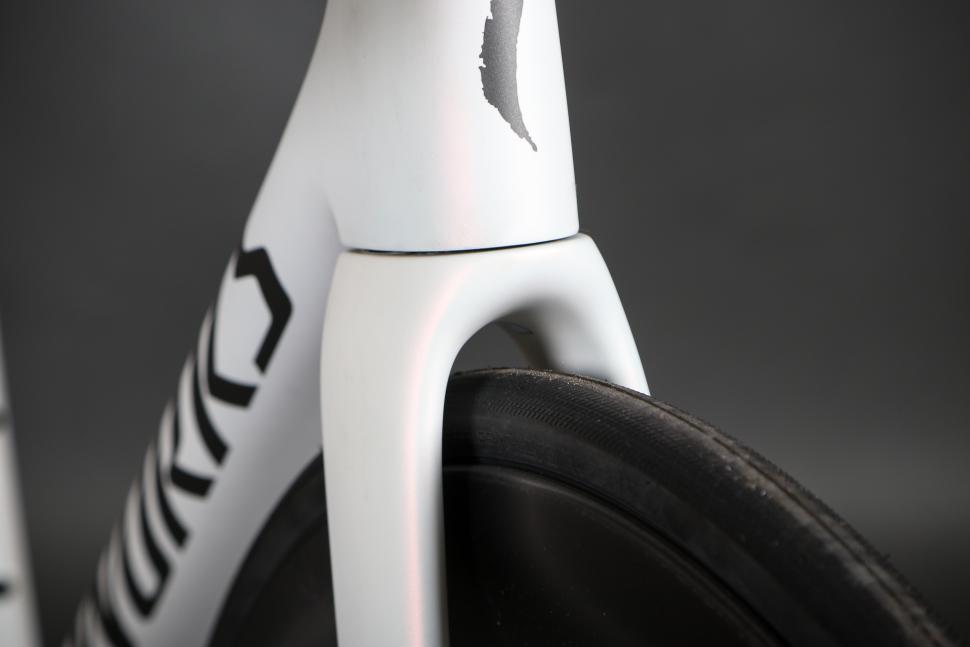


Add new comment
10 comments
Whoa, aero really is beyond my understanding: So the front of the tyre or STI-levers, which in my opinion hit the air first/have leading edges, are not such things in practise since there's no paint in them???
and only "very marginally less" robust than the SL7
Funny how every maginal gain is boasted about and shoved through our throats, until something is marginally less aero, less stiff, or heavier, then it's casually dismissed.
"...... it's hard to deny that the Specialized Tarmac SL8 is the hottest road bike in the world right now. "
This appears to a long eumphemism for: This is a bike for which the advertsing and PR blurb repeated by websites such as this one has been pushed harder than anything before in the hope that as many dafties will talk about and buy one as possible.
Oops! They got me! (On the talk-about, anyway).
Yeah, it reads like road.cc writer was seconded to Specialised marketing here.
So much attention put on one bike which costs - in its 'cheapest' version £6000!!
I dont think many people actually care. The advertising blurb of the SL7 made it out to be the bike to rule all others yet it really didn't. My guess is the SL8 will be the overhyped bike of the year.
None of these 8 points matter a dot, except to those who bought the '7', and then they are sleepless facts.
Just wondering why bike launches from other manufacturers don't get the same attention. And I'm not just talking about Pinarello or Cervelo. How are others supposed to compete with this kind of attention? To add, I do like Spesh, but other cycles are available.
€€€
Giving Road.cc and other publishers the benefit of the doubt, this is about marketing dollar. Specialized spend more on marketing than anyone, and part of that is releasing content, and providing tit bits that make easy, good quality copy for the cycling media to pick up.
Build it and they will come.
But for me, the harder someone needs to tell me something is really, really good, the more I suspect its not really any different to anything else.
I'd argue that Spesh gets no more fuss than Colnago or the handbag Pinarellos.
And there's probably far more R&D spend on a Spesh then either of those brands.